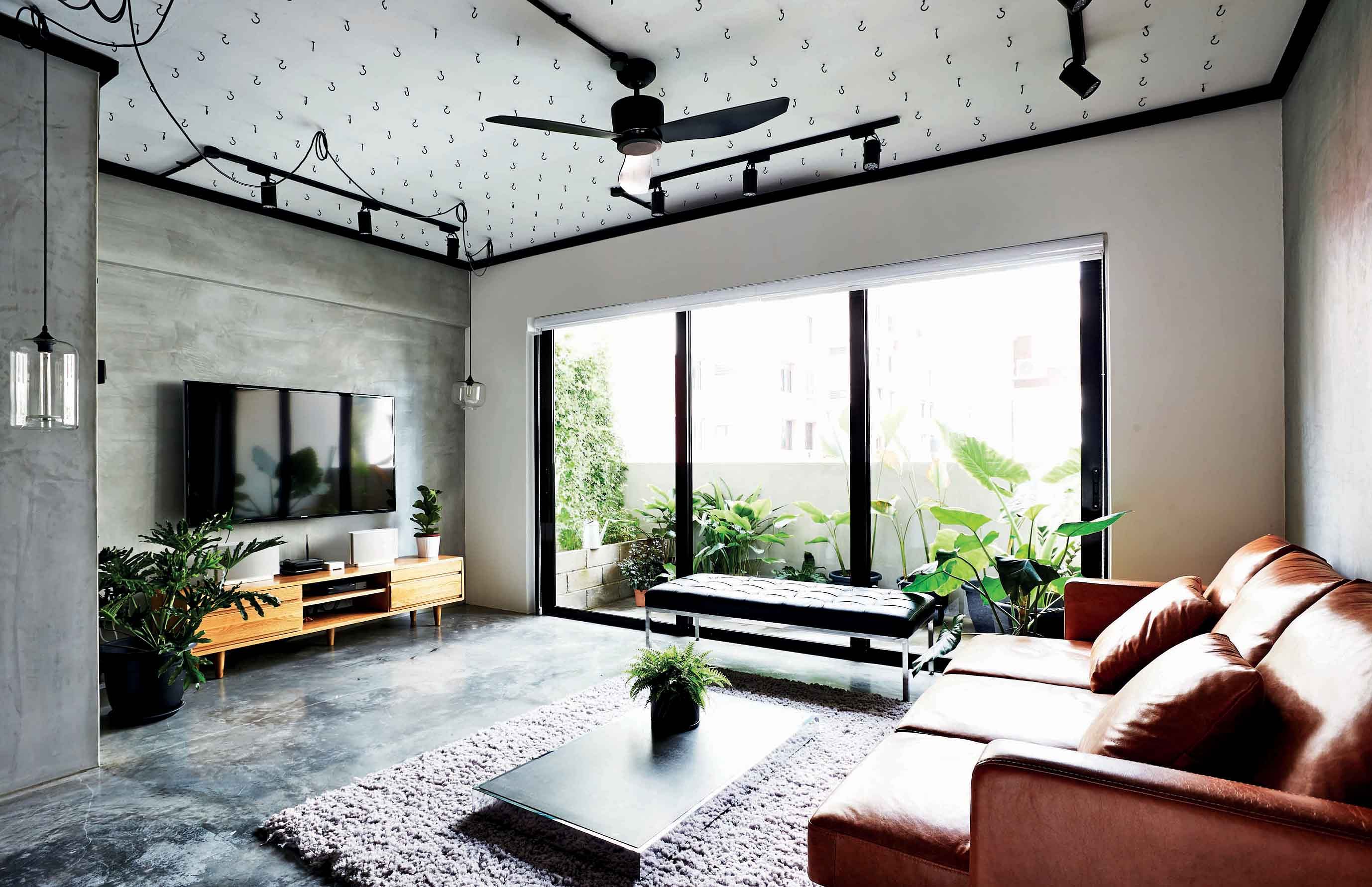Create visual anchors using tropical plants with big leaves
I would love to have plants at home, but I want them to look stylish and not haphazard or messy. Are there any tips?
Having plants at home is one of the top design trends of this year, but they have to be healthy, thriving plants.
All plants need sunlight to grow, so first identify where you can place them. Possible locations include the balcony and near sources of sunlight, such as next to windows.
A look that is quite popular now is to have one big tropical plant with big leaves to anchor the space for dramatic effect. Choose a pot with a clean shape as it suits most contemporary spaces.
To admire plants at eye level, place small plant pots on wall-mounted shelves.
Consider succulents, which are easy to maintain. They are also easy to pot, so you have more variety in your choice of container - think dainty teacups and even eggcups for smaller succulents.

To save space, look to wall- mounted planters and hanging pots. Handmade products are in and macrame pot holders are on trend.
For hanging pots, choose plants with trailing leaves for a lovely effect.
Otherwise, hanging glass containers are another great-looking option - fill them with air plants that are light and easy to maintain.
Do not forget terrariums, which add an instant shot of greenery to any tabletop.
For something more affordable, even the humble money plant can look good if it is healthy. It is easy to grow, so you can invest more in the pot or try different containers.
Different plants have varying light and water requirements, so remember to ask the plant nursery about the needs of the plant when you buy it.

Re-plaster flaking wall for a complete solution
The plaster on my walls started to flake not too long after my renovation. Why does it happen and what can I do to prevent it?
There might be a few reasons, as you mentioned you had just renovated your home.
"If your walls have been newly plastered, the plaster needs to be totally dry before you apply any paint. If not, the paint will not stick properly," says managing director Montie Mahtani of interior design firm M3 Studio.
"Or it could be that there was no primer coat added before the wall was painted, so the paint layer was not able to bond totally with the wall."
Another reason could be extreme temperature changes from day to night (from air-conditioning) and vice versa, which might make the wall damp and lead to peeling.
A solution would be to scrape off the flaking parts (above) as well as the adjoining area and re-plaster that area.
Once the plaster has dried completely, apply a primer coat. Only then should you repaint either the whole wall or just that portion.
To prevent other parts of the wall from flaking, he recommends applying the above process to the whole wall.
Pick the right frame to protect artwork
I am wondering if I should upgrade the frame of a painting I own. What sort of frame should I choose?
The frame of an artwork should enhance the work, much like make-up on a woman, says Ms Jazz Chong, director of art gallery Ode to Art.
So the main considerations are whether changing the frame will make the art piece look better and if it will suit the interior space you are displaying the work in.
Perhaps another reason to change the frame is to protect the work, such as choosing glass which filters out UV rays and acid-free materials that will not affect the quality of the framed items over time. This is called conservation framing.
Take your artwork to a reliable framer who can advise you on what frames are suitable and use the right materials to protect the work in the long run.
The framer will also be able to change the frame without damaging your art piece.
Wider fan blades circulate air better
I read that the more blades a fan has, the better the cooling effect. Should I just go for the most number of blades? Why do some fans have only two blades?
As a rule of thumb, the more blades a fan has, the better the wind delivery. However, other factors such as the design and angle of the fan blade are also important, says Mr Eric Tay, founder of ceiling fan specialist Acorn Fan.
The wider the blades, the better the fan will be in circulating air, he says.
"Use your hand to demonstrate this. Keep your fingers together and move them up and down rapidly - you will feel more 'breeze' as compared with doing the same action with a finger."
Fan blades positioned at steeper angles (16 to 26 degrees) will also circulate a larger amount of air, but they require more powerful motors to reach a high speed. So even a two-blade fan can circulate air well if it has wider-than-usual blades and a steeper angle.

•Home & Decor magazine's editor Rebeckka Wong and experts in the renovation and home decoration answer queries from readers in this series. These questions first appeared in the February issue of Home & Decor, published by SPH Magazines.
•Got a decorating or home renovation issue? Write to Experts Say, Home & Decor, 82 Genting Lane, Media Centre, Level 7, Singapore 349567 or e-mail maghomedecor@sph.com.sg. Photos and layouts are non-returnable.
